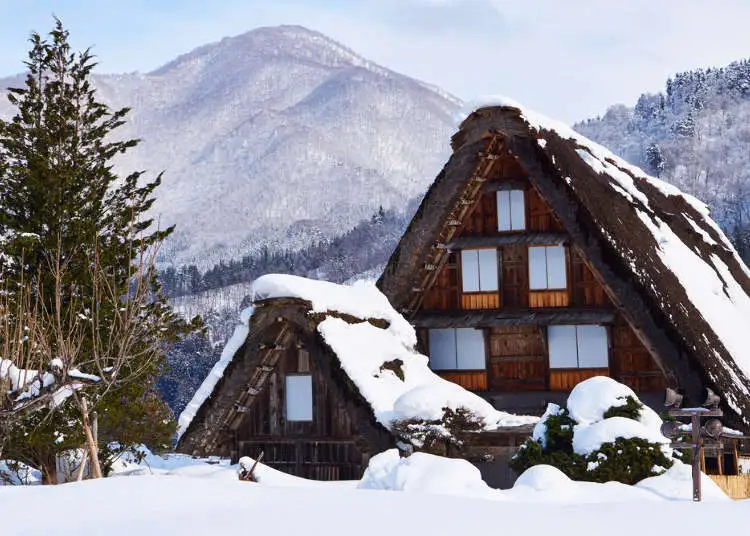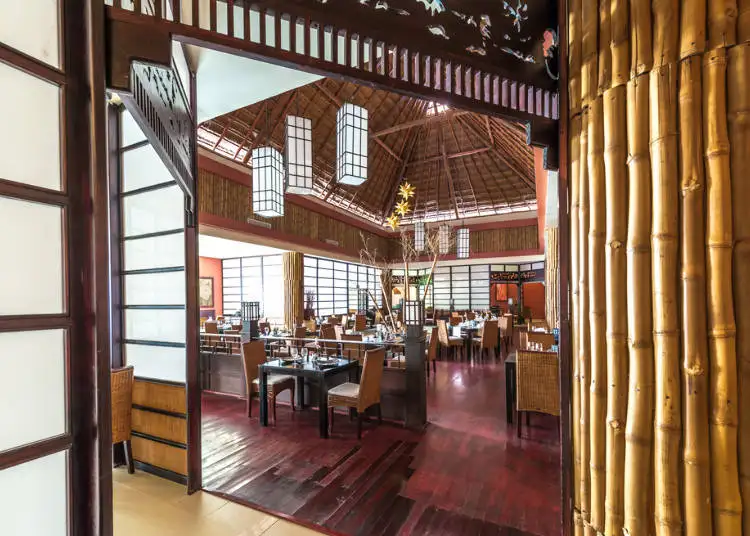
What does the word "kominka" mean? Traditional Japanese farmhouses known as kominka are constructed in a unique and incredibly nostalgic form. In contrast to well-known ancient towns like Kyoto or Edo (old Tokyo), kominka offer a fascinating rural side of Old Japan. These farmhouses have been converted into hotels and restaurants in recent years, providing superb service in the most romantic, nostalgic, rural settings.
As previously stated, the term "kominka" refers to old family-owned farmhouses made of old wood. But what exactly qualifies as a kominka? According to the regulations of the Japanese cultural heritage registration system, buildings over half a century old that were created in response to the regional environment - in a nutshell, the term "old farmhouse" fits best to comprehend what exactly a kominka is. The renovation of these historic houses with authentic and traditional materials, such as roof tiles or thatch for the roof, is becoming more popular throughout Japan. Many of them have been resurrected in local towns and neighborhoods, not in the traditional sense of housing a farming family, but as attractive cafés, nostalgic restaurants, and one-of-a-kind hotels.
Japanese houses built before WWII frequently make use of magnificent natural elements such as wood, soil, and straw. These kominka can be found in both rural locations as farmhouses and in cities like Kyoto as townhouses, where they served the population. Their qualities and colors vary greatly depending on their residents - naturally, a samurai's dwelling would look different from that of a common farmer.
 The classic farmhouse-style kominka is prevalent in rural settlements near mountains, and it is a cozy structure with minimal walls. The townhouse-style kominka, on the other hand, can be seen in cities and along highways, with the usual narrow shape of urban Japanese housing and a large front facing the road - these townhouses were not home to farmers, but to diverse enterprises.
The classic farmhouse-style kominka is prevalent in rural settlements near mountains, and it is a cozy structure with minimal walls. The townhouse-style kominka, on the other hand, can be seen in cities and along highways, with the usual narrow shape of urban Japanese housing and a large front facing the road - these townhouses were not home to farmers, but to diverse enterprises.
Kominka in Modern Cityscapes: Traces of the Past
Approximately 120,000 traditional kominka have survived to the present day in Japan. No matter where you go, you're bound to come across a quaint little street lined with kominka or a village studded with historic farmhouses, allowing visitors to step back a century. Famous kominka locations in Japan include the World Heritage Site Shirakawa-go in Gifu Prefecture and Hida Takayama, a historic highway hamlet also in Gifu. Kayabuki no Sato in Kyoto Prefecture is a well-known kominka village, Okayama has the Kurashiki Bikan ancient area with its picturesque canal, and Kawagoe in Saitama has a full street lined with old storehouses. As you can see, each region of Japan has its own unique kominka tradition that can and should be cherished even now. Even Japan's capital, Tokyo, has a nostalgic beauty; simply visit areas like Yanaka, Nezu, or Sendagi.
 Taking a Step Back in Time: Visiting Kominka Restaurants and Cafés
Taking a Step Back in Time: Visiting Kominka Restaurants and Cafés
After studying the qualities of kominka and their preservation, it's time to immerse yourself in Japanese kominka culture! As previously said, several of the rebuilt historic houses are not individual dwellings but rather atmospheric cafés and restaurants. While you'd expect to see one or the other kominka in the countryside, coming across one in the midst of the rush and bustle of downtown Tokyo can be a somewhat startling - and totally unique - experience.
Every kominka has an innate coziness due to its origins as a private house, and some include modest, quiet gardens. Another unusual trait of these houses is that they are relatively dark, thus they are lit with warm light that is soothing on the eyes. This lighting complements the house's antique, natural elements, creating a delightfully quiet, calm, and pleasant environment in which to forget about one's daily routine. Furthermore, many kominka restaurants earn followers due to their marvelously big layout and the incredible variety of ingredients used in their cuisine. Kominka restaurants are frequently the best choice for traditional local Japanese cuisine, while some serve fantastic French and Italian fare. Every food tastes much better when enjoyed in the nostalgically magnificent ambience of an ancient farmhouse, doesn't it?
 Japanese of Old: Kominka Hotels
Japanese of Old: Kominka Hotels
Staying at a kominka hotel is an excellent way to get a glimpse of a truly authentic experience of traditional Japanese living. Time seems to slow down in these historic farmhouses, providing a look into nostalgic Japanese daily life as well as a breathtaking perspective of the surrounding environment. This farmer's experience is, of course, accompanied by delicious local cuisine. Kominka provide a unique brand of gentle and nostalgic relaxation that you won't find anywhere else. Why not fully immerse yourself in this cultural experience and forget about the modern world for a few days?
 Kominka - A Taste of "Traditional Japan"
Kominka - A Taste of "Traditional Japan"
Since ancient times, the Japanese have coexisted with nature. Traveling out into the countryside, finding local cultures, traditions, and scenery that changes with the seasons, and not just discovering an altogether new side of Japan, but perhaps even of yourself? Whether you enjoy a quiet and relaxed lunch in a kominka or opt to immerse yourself in the lives of traditional Japanese farmers, we guarantee that this experience will leave you with great and lasting memories. Forget about time and travel back in time kominka-style!






